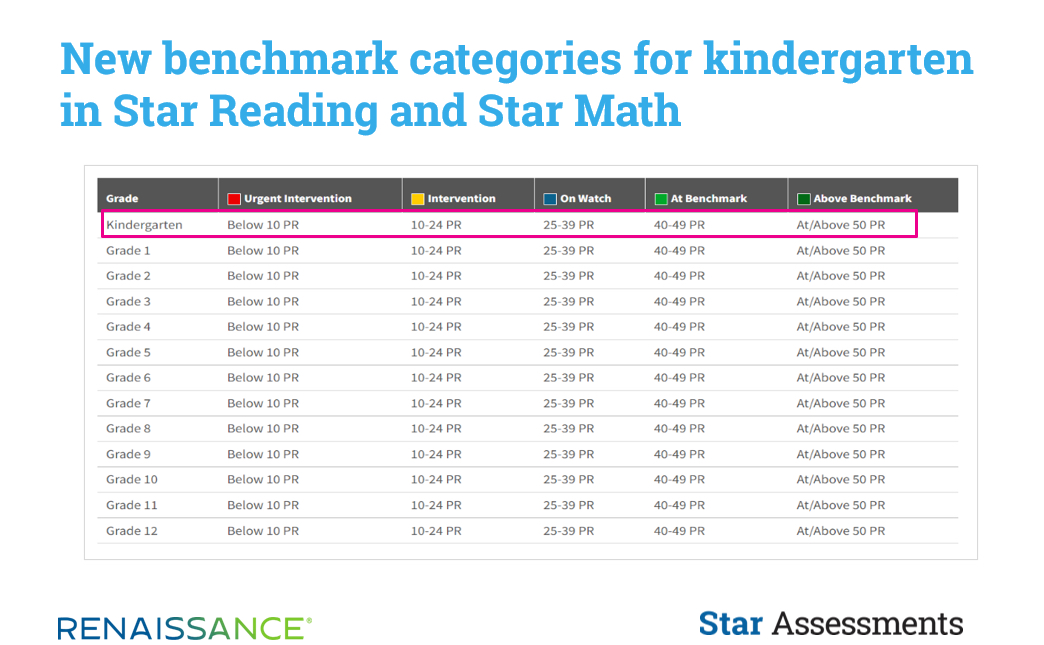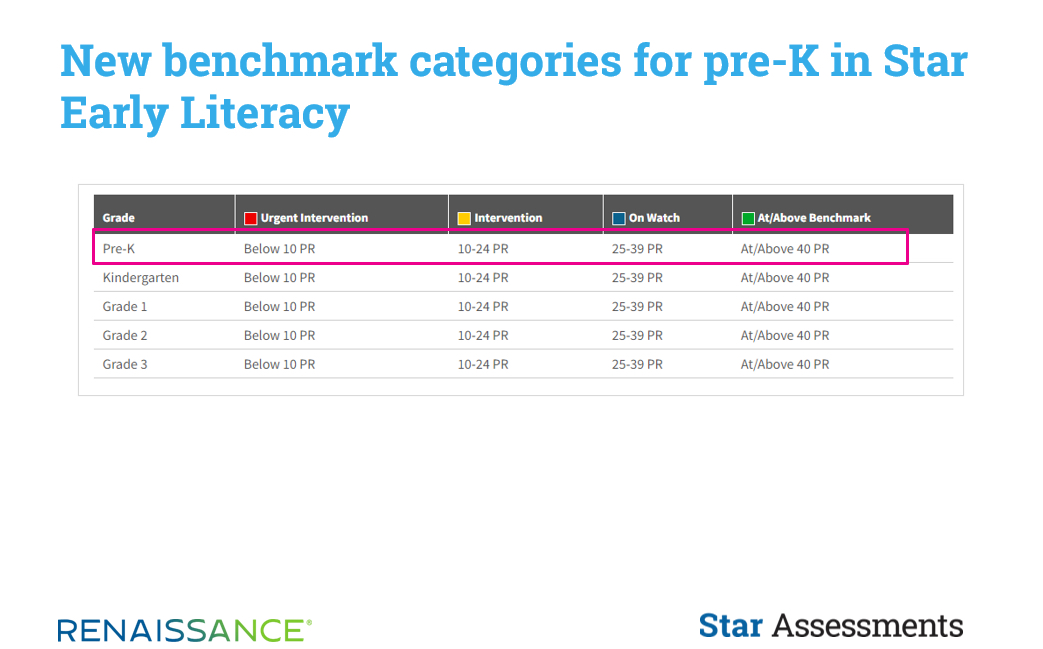Star Assessments provide new norms and benchmarks for pre-K and kindergarten students
This school year, pre-K and kindergarten teachers will gain deeper insights into their students’ performance with the following updates in Star Assessments:
- New national norms for pre-K students taking Star Early Literacy
- New national norms for kindergarten students taking Star Math
- New benchmark categories for kindergarten students taking Star Reading and Star Math, and for pre-K students taking Star Early Literacy
What are norm-referenced scores and why are they helpful?
Norm-referenced scores provide a relative measure of student achievement compared to the performance of a group of students at a given time. Educators use this data to gauge student ability, help determine instructional groups, and inform instruction based on student needs.
Which norm-referenced scores are included on Star reports?
Star Assessments provide a variety of norm-referenced scores, including Percentile Rank (PR), Student Growth Percentile (SGP), Grade Equivalent (GE), and Normal Curve Equivalent (NCE) to help you determine if students are performing above, at, or below their grade-level peers. In addition to norm-referenced scores, Star Assessments also provide criterion-referenced scores that are used to compare students’ knowledge or skills against a predetermined standard. Click here for a detailed list of Star scores.
Does Star Reading include new norms for kindergarten?
Star Reading already includes norms for kindergarten students. However, School and District benchmarks have been added to Star Reading, along with benchmarks categories for Star Math and Star Early Literacy. The added benchmarks help educators identify how students are performing, giving them data and insights to immediately inform and guide instruction.











